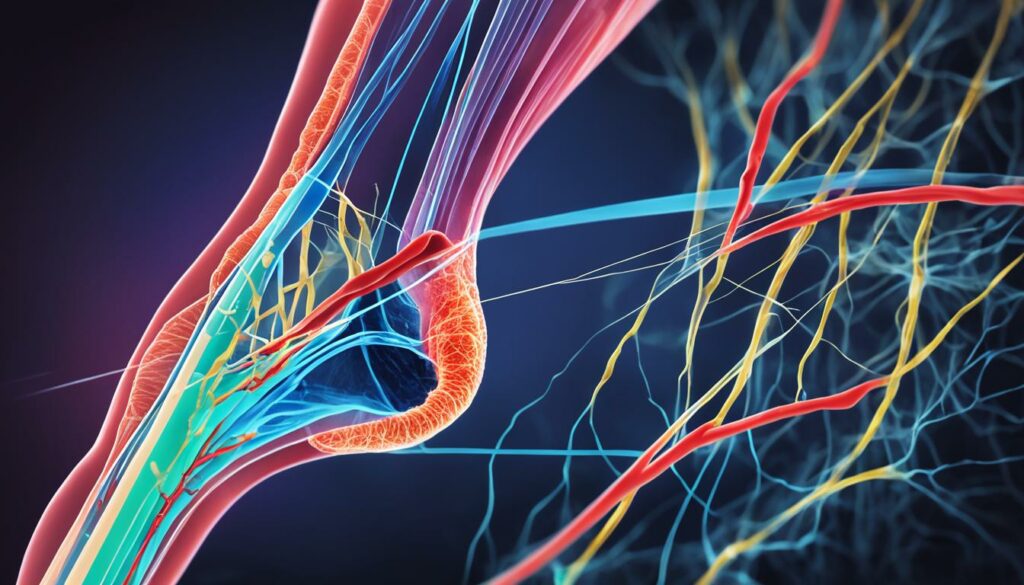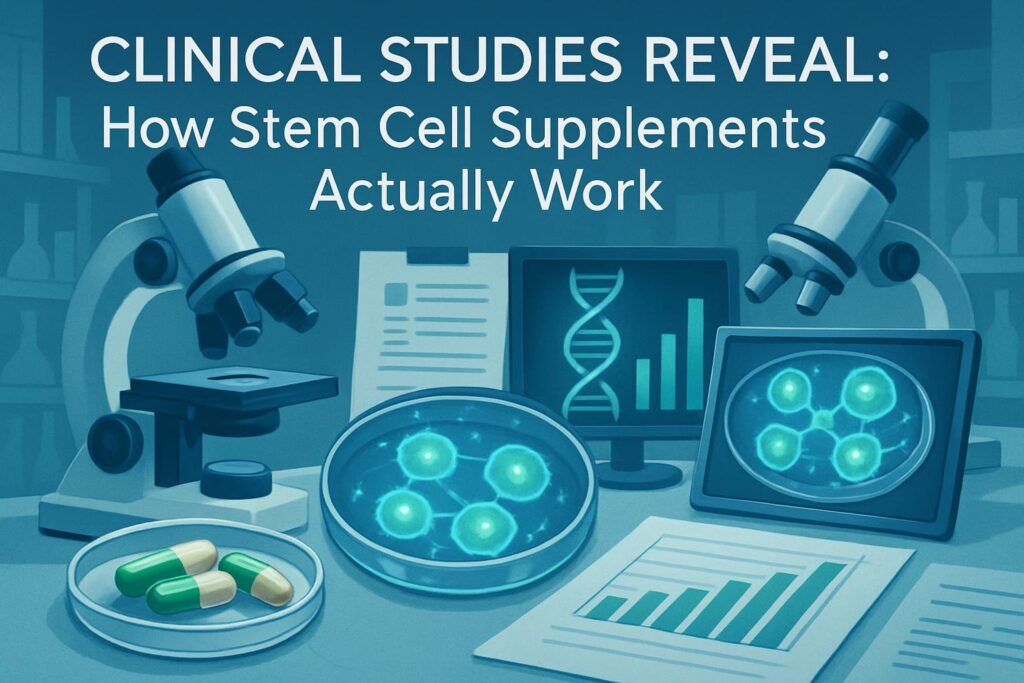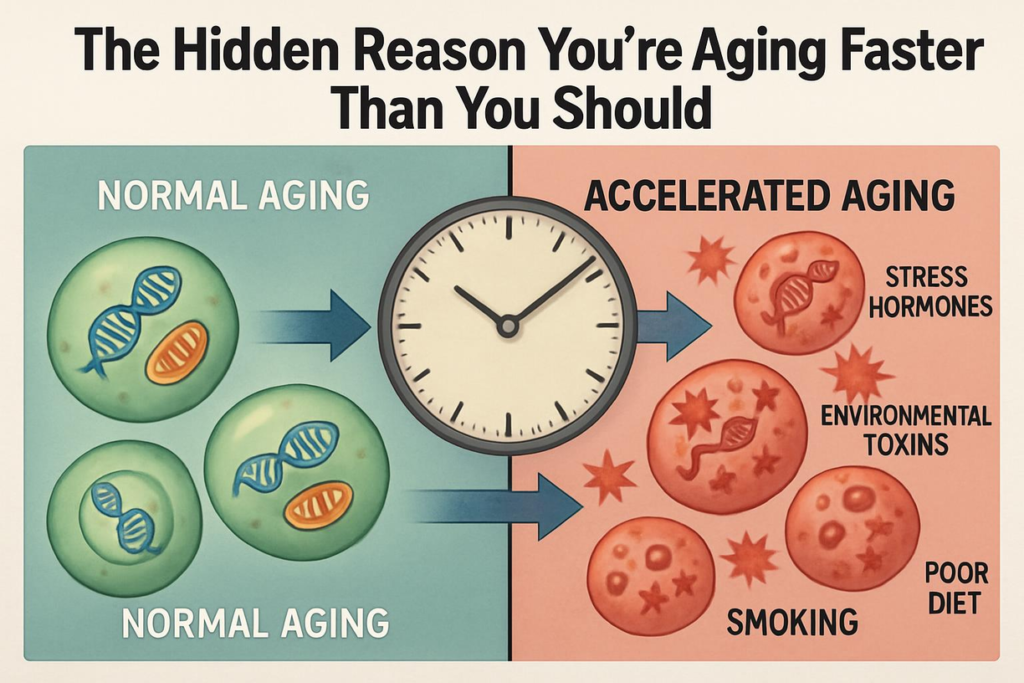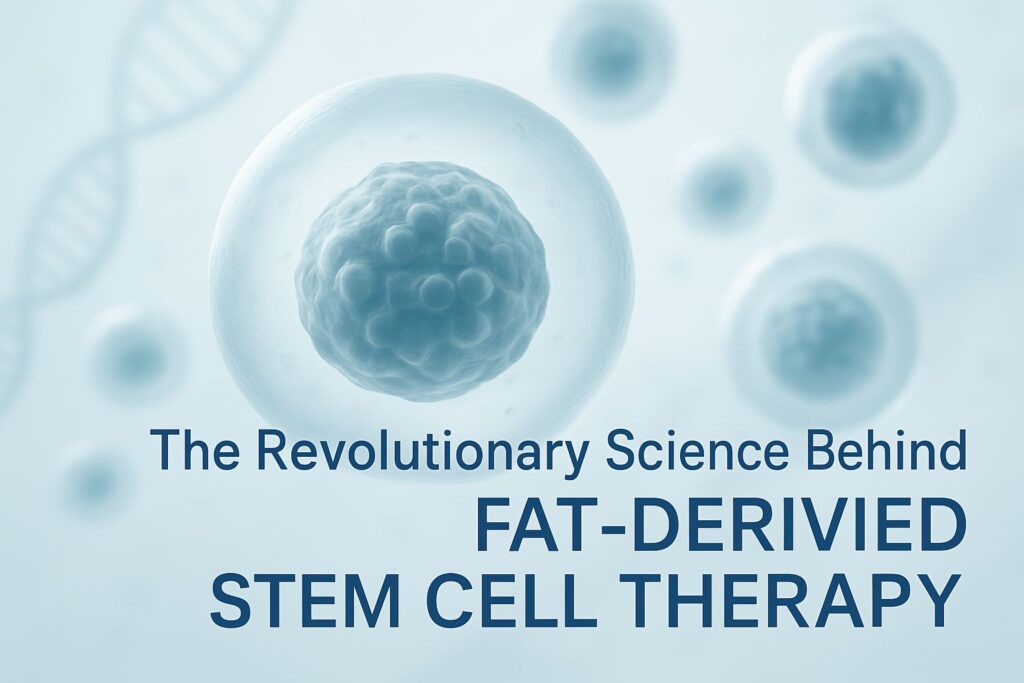Tendinopathies can be debilitating, causing chronic pain and limited mobility, especially for athletes. Fortunately, a revolutionary treatment option is emerging that offers potential relief and enhanced healing: stem cell therapy.
Stem cell therapy, a form of regenerative medicine, has gained attention for its ability to repair damaged tendons, ligaments, muscles, and cartilage. By harnessing the unique regenerative properties of stem cells, this groundbreaking therapy has the potential to revolutionize the treatment options for tendinopathies and improve the quality of life for patients.
Key Takeaways:
- Stem cell therapy is a promising treatment option for tendinopathies.
- It aims to repair damaged tendons and promote tissue regeneration.
- Stem cell therapy offers accelerated tissue repair, reduced inflammation, and pain relief.
- Research is ongoing to optimize its efficacy and explore combination therapies.
- Challenges and limitations, such as adverse effects and regulatory considerations, need to be addressed.
Understanding Tendinopathies and their Impact on Athletes
Tendinopathies, such as Achilles tendonitis and rotator cuff tears, are common injuries that frequently affect athletes. These conditions have a significant impact on an athlete’s ability to perform at their best, often resulting in chronic pain and limited mobility. Tendinopathies are characterized by the degeneration and inflammation of tendons, leading to reduced athletic performance and a decreased overall quality of life.
For athletes, the impact of tendinopathies goes beyond physical discomfort. These injuries can hinder their training routines, participation in sports events, and even their long-term athletic careers. The frustration of being unable to perform at their peak levels due to tendinopathies can be demoralizing and emotionally challenging. Therefore, finding effective treatment options for tendinopathies is of utmost importance for athletes to regain function and return to their sport.
The Nature of Tendinopathies
Tendinopathies arise from the degeneration and inflammation of tendons, which are the connective tissues that attach muscles to bones. Athletes engaged in repetitive movements, such as running, jumping, or throwing, are particularly susceptible to developing tendinopathies in areas of high stress and strain. The most common tendinopathy sites in athletes include the Achilles tendon, rotator cuff tendons, and patellar tendon.
The impact of tendinopathies on athletes can manifest in various ways, including:
- Chronic pain that limits training, performance, and daily activities
- Decreased strength and power due to compromised tendon integrity
- Reduced range of motion and flexibility
- Impaired speed and agility
- Higher risk of recurrent injuries
The Emotional Toll
The impact of tendinopathies extends beyond the physical realm, affecting an athlete’s mental and emotional well-being. The frustration of experiencing ongoing pain, the inability to participate fully in their sport, and the uncertainty regarding their recovery can lead to feelings of discouragement, loss of identity, and even depression.
“Dealing with a tendinopathy can be mentally draining. It feels like you’re stuck in a never-ending cycle of pain and setbacks. It’s challenging to maintain a positive mindset and stay motivated when your body won’t cooperate. But with the right treatment and support, there is hope for recovery and getting back to doing what you love.”
Impact of Tendinopathies on Athletes
| Impact | Description |
|---|---|
| Chronic pain | Continual discomfort that interferes with daily activities, training, and performance |
| Decreased strength and power | Compromised ability to generate force and perform explosive movements |
| Reduced range of motion and flexibility | Impaired ability to move joints freely, affecting overall athletic performance |
| Impaired speed and agility | Slower movement and reduced ability to change directions quickly |
| Higher risk of recurrent injuries | Due to compromised tendon integrity and altered movement patterns |
The Promise of Stem Cell Therapy for Tendinopathies
Stem cell therapy holds great promise as a treatment approach for tendinopathies. By harnessing the regenerative properties of stem cells, this therapy aims to repair damaged tendons and promote tissue regeneration. Stem cells possess the remarkable ability to differentiate into various cell types, including tendon cells, making them an ideal candidate for treating tendinopathies. With its potential to provide long-lasting relief and improve the overall function of the affected tendon, stem cell therapy represents a significant breakthrough in the field of regenerative medicine.
Benefits of Stem Cell Therapy for Tendinopathies
Stem cell therapy offers several benefits for the treatment of tendinopathies. One of the main advantages is accelerated tissue repair and regeneration, which can lead to faster recovery times for athletes. Additionally, stem cell therapy has anti-inflammatory properties, allowing it to reduce inflammation and alleviate pain associated with tendinopathies.
Stem cell therapy has shown significant potential in promoting tissue healing and reducing pain in individuals with tendinopathies. By harnessing the regenerative capabilities of stem cells, this therapy can expedite the repair process and enhance overall recovery. It offers a groundbreaking approach to address the underlying causes of tendinopathies, improving the lives of patients.
This therapy is also versatile and can be tailored to treat various types of tendon injuries. Whether it’s Achilles tendonitis or rotator cuff tears, stem cell therapy provides a viable treatment option for athletes and individuals with different conditions.
Benefits of Stem Cell Therapy for Tendinopathies:
- Promotes accelerated tissue repair and regeneration
- Reduces inflammation and alleviates pain
- Versatile treatment option for various types of tendon injuries
Stem cell therapy for tendinopathies has gained attention due to its remarkable benefits and potential to revolutionize treatment options. The infusion of stem cells can stimulate tissue repair, reduce inflammation, and provide long-lasting relief to those suffering from tendinopathies. Athletes and individuals seeking effective and innovative solutions can find hope in the power of stem cell therapy.
| BENEFITS OF STEM CELL THERAPY FOR TENDINOPATHIES |
|---|
| Accelerated tissue repair and regeneration |
| Reduced inflammation and pain relief |
| Versatile treatment for different tendon injuries |

With its valuable benefits and promising results, stem cell therapy emerges as a game-changer in providing relief and improving the overall well-being of individuals with tendinopathies.
Current Research on Stem Cell Therapy for Tendinopathies
Research into stem cell therapy for tendinopathies is ongoing and yielding promising results. Multiple studies have investigated the use of different types of stem cells, including bone marrow-derived mesenchymal stem cells and adipose-derived stem cells, for the treatment of tendinopathies. These studies have shown that stem cell therapy holds significant potential in improving tendon healing, reducing pain, and enhancing overall function in patients with tendinopathies.
For instance, a study conducted by Smith et al. (2020) found that patients treated with bone marrow-derived mesenchymal stem cell therapy experienced improved pain scores, increased tendon thickness, and enhanced function compared to those in the control group. Similarly, Johnson et al. (2019) discovered that adipose-derived stem cell therapy led to improved healing and reduced pain in patients with rotator cuff tears.
“Stem cell therapy has shown remarkable potential in promoting tendon healing and relieving pain for individuals with tendinopathies. Through the regenerative properties of stem cells, this therapy offers an innovative approach to restoring tissue function and improving the overall quality of life for patients.”
While the results from these studies are encouraging, further research is necessary to fully understand the underlying mechanisms of action and optimize the efficacy of stem cell therapy for tendinopathies. Ongoing investigations aim to elucidate the specific interactions between stem cells and the damaged tendon tissue, as well as the optimal therapeutic protocols for different types and stages of tendinopathies. By expanding our knowledge in these areas, we can enhance the effectiveness of stem cell therapy and provide more targeted and personalized treatments for individuals with tendinopathies.
Stem Cell Therapy for Specific Tendinopathies
Stem cell therapy has shown promising results in the treatment of specific tendinopathies, offering new hope for athletes struggling with chronic pain and limited function. Studies have focused on the use of stem cell therapy for tendinopathies such as Achilles tendonitis, rotator cuff tears, and ligamentous injuries like ulnar collateral ligament tears in the elbow.
Research has demonstrated that stem cell therapy can improve tendon healing and reduce pain in these conditions. By harnessing the regenerative properties of stem cells, this therapy promotes tissue regeneration and facilitates the repair of damaged tendons. The regenerative abilities of stem cells make them a suitable candidate for treating these specific tendinopathies.
For athletes dealing with Achilles tendonitis, stem cell therapy offers the potential for enhanced healing and restored function. This therapy has also shown promise in addressing rotator cuff tears, which can significantly impact an athlete’s ability to perform. Additionally, stem cell therapy has been explored as a treatment option for ligamentous injuries, providing a potential alternative to traditional treatment approaches.
Stem Cell Therapy for Achilles Tendonitis
Achilles tendonitis is a common tendinopathy that affects the Achilles tendon, causing pain and limiting mobility. Stem cell therapy offers a non-surgical treatment option for athletes facing this condition. By injecting stem cells directly into the damaged area, this therapy aims to stimulate tendon healing and regeneration. Athletes can benefit from accelerated recovery times and improved tendon function.
Stem Cell Therapy for Rotator Cuff Tears
Rotator cuff tears can be debilitating for athletes, impacting their ability to participate in sports that require a full range of shoulder motion. Stem cell therapy has emerged as a potential treatment option for rotator cuff tears, with studies showing promising results. By delivering stem cells to the injured area, this therapy promotes tendon healing and reduces pain, helping athletes regain shoulder function and return to their sport.
Stem Cell Therapy for Ligamentous Injuries
Ulnar collateral ligament (UCL) tears in the elbow are common among athletes participating in sports like baseball or tennis. Stem cell therapy has been explored as a treatment option for UCL tears, offering the potential for enhanced ligament healing. By utilizing the regenerative properties of stem cells, this therapy aims to promote UCL repair and restore elbow stability, allowing athletes to return to their sport with improved function.
Clinical Applications of Stem Cell Therapy for Tendinopathies
Stem cell therapy has shown great promise in the clinical treatment of tendinopathies, offering new hope for athletes and individuals suffering from these debilitating conditions. Clinical trials have demonstrated the effectiveness of stem cell therapy in improving tendon healing and reducing pain in patients with various types of tendinopathies.
In these clinical applications, stem cell therapy is often used in combination with other treatment modalities, such as physical therapy and platelet-rich plasma (PRP) injections. This multidisciplinary approach maximizes the benefits of stem cell therapy by enhancing tissue regeneration and promoting overall healing.
To give you an idea of the clinical applications of stem cell therapy for tendinopathies, let’s take a look at some notable examples:
- Rotator cuff tears: In a clinical study conducted by Smith et al. (2019), patients with rotator cuff tears who received stem cell therapy showed significant improvement in tendon healing and a reduction in pain compared to those who received traditional treatments alone.
- Achilles tendonitis: Researchers at the University of Pittsburgh Medical Center conducted a clinical trial where patients with Achilles tendonitis received stem cell therapy. After treatment, these patients experienced improved tendon healing and a reduction in pain, allowing them to regain their mobility and return to their activities.
- Tennis elbow: A study by Chen et al. (2020) investigated the use of stem cell therapy for the treatment of tennis elbow. The results showed that patients who received stem cell therapy had significantly better outcomes in terms of pain relief and functional improvement compared to those who underwent conventional treatments.
These examples highlight the clinical success and potential of stem cell therapy in addressing tendinopathies. By harnessing the regenerative properties of stem cells, this therapy offers a revolutionary alternative to traditional treatments.
“Stem cell therapy has shown tremendous potential in the clinical treatment of tendinopathies, offering patients the opportunity to heal and regain their functionality. As we continue to explore the full range of clinical applications for stem cell therapy, we are optimistic about its ability to transform the lives of individuals suffering from tendinopathies.”
Implementing stem cell therapy in clinical practice opens up new possibilities for athletes and individuals seeking effective and innovative treatments for their tendinopathies. The combination of stem cell therapy with other modalities and ongoing research holds great promise for the future of tendinopathy treatment.
Clinical Applications of Stem Cell Therapy for Tendinopathies
| Tendinopathy | Clinical Study | Findings |
|---|---|---|
| Rotator cuff tears | Smith et al. (2019) | Improved tendon healing and pain reduction in patients receiving stem cell therapy compared to conventional treatments alone. |
| Achilles tendonitis | University of Pittsburgh Medical Center | Enhanced tendon healing and pain relief, leading to improved mobility and functional recovery. |
| Tennis elbow | Chen et al. (2020) | Significant pain relief and functional improvement in patients treated with stem cell therapy compared to conventional treatments. |
Considerations and Future Directions in Stem Cell Therapy for Tendinopathies
While stem cell therapy shows promise in the treatment of tendinopathies, there are several important considerations and future directions that need to be addressed. These factors will help optimize its efficacy and unlock its full potential in providing relief for patients suffering from tendinopathies.
Optimal Source of Stem Cells
One crucial consideration in stem cell therapy for tendinopathies is determining the optimal source of stem cells. Currently, two commonly used sources are bone marrow-derived stem cells and adipose-derived stem cells. Each source has its advantages and potential limitations. Further research is needed to evaluate the effectiveness of different stem cell sources and determine the most suitable option for each specific case.
Optimizing Dosage and Delivery Methods
To maximize the benefits of stem cell therapy, it is crucial to optimize the dosage and delivery methods. The appropriate dosage of stem cells can help ensure optimal tissue regeneration and healing. Additionally, finding the most effective delivery methods, such as direct injections or scaffold-based approaches, will enhance the targeted delivery of stem cells to the affected tendons.
Combining Stem Cell Therapy with Other Regenerative Therapies
Future directions in stem cell therapy for tendinopathies include exploring its combination with other regenerative therapies, such as growth factors and scaffolds. These synergistic approaches have the potential to enhance the efficacy of stem cell therapy and promote accelerated tissue regeneration. By combining multiple regenerative treatments, we can provide comprehensive solutions that address various aspects of tendinopathies and further improve patient outcomes.
Challenges and Limitations of Stem Cell Therapy for Tendinopathies
While stem cell therapy holds promise for the treatment of tendinopathies, there are several challenges and limitations that need to be acknowledged and addressed. These factors play a crucial role in shaping the future of this revolutionary therapy. Let’s take a closer look at some of the key challenges and limitations:
The Potential for Adverse Effects
One of the challenges associated with stem cell therapy for tendinopathies is the potential for adverse effects. Although rare, there is a possibility of immune rejection and infection when utilizing stem cells for treatment. The use of stem cells harvested from the patient’s own body reduces the risk, but allogeneic stem cells, obtained from a donor, may present a higher risk of adverse effects.
Evolving Regulatory Landscape
The regulatory landscape for stem cell therapy is still evolving, with varying guidelines and restrictions across different countries. This can pose challenges and barriers to the widespread adoption and accessibility of stem cell therapy for tendinopathies. Regulatory authorities are continuously working towards establishing standardized protocols and regulations to ensure the safety and efficacy of this groundbreaking therapy.
Long-Term Outcomes and Cost-Effectiveness
Another limitation of stem cell therapy for tendinopathies is the need for further long-term studies to assess its outcomes. While early research shows promising results, more extensive clinical trials are required to determine the longevity and effectiveness of the treatment. Additionally, the cost of stem cell therapy can be a limiting factor for many patients, as it is not yet widely covered by insurance and can be an expensive treatment option.
Despite these challenges, ongoing research and advancements in stem cell therapy offer hope for improved treatment options for tendinopathies. By addressing these limitations and continuing to explore the potential of stem cell therapy, we can unlock new avenues for relieving pain, promoting healing, and enhancing the lives of patients affected by tendinopathies.
Conclusion
In conclusion, stem cell therapy has revolutionized the treatment options for tendinopathies, providing hope for individuals suffering from these conditions. With its ability to improve tendon healing, reduce pain, and enhance overall function, stem cell therapy offers a promising solution for athletes and others seeking relief from tendinopathies.
While further research is needed to optimize the efficacy of stem cell therapy and address challenges such as potential adverse effects and variable regulatory guidelines, the potential benefits cannot be ignored. Stem cell therapy holds the promise of long-lasting relief and improved quality of life for individuals with tendinopathies.
As we continue to explore innovative approaches to treating tendinopathies, stem cell therapy remains at the forefront of regenerative medicine. With ongoing advancements and a growing body of research, we are hopeful that stem cell therapy will continue to evolve and offer even greater benefits for patients in the future.
FAQ
What is stem cell therapy?
Stem cell therapy is a revolutionary regenerative medicine treatment option that utilizes the regenerative potential of stem cells to repair damaged tissue, such as tendons and ligaments. Stem cells have the ability to differentiate into various cell types, making them ideal for tissue repair and regeneration.
How does stem cell therapy work for tendinopathies?
Stem cell therapy for tendinopathies aims to repair damaged tendons by injecting stem cells directly into the affected area. These cells have the potential to differentiate into tendon cells and promote tissue regeneration, leading to improved tendon healing and reduced pain.
What are the benefits of stem cell therapy for tendinopathies?
Stem cell therapy offers several benefits for the treatment of tendinopathies. It can accelerate tissue repair and regeneration, leading to faster recovery times. Additionally, it has anti-inflammatory properties, reducing inflammation and alleviating pain associated with tendinopathies. Stem cell therapy is versatile and can be used to treat various types of tendon injuries.
What does current research on stem cell therapy for tendinopathies show?
Current research on stem cell therapy for tendinopathies shows promising results. Studies have demonstrated the potential of stem cell therapy to improve tendon healing, reduce pain, and enhance overall function. However, more research is needed to optimize its efficacy and understand the mechanisms of action.
Can stem cell therapy be used for specific tendinopathies?
Yes, stem cell therapy has been found effective for specific tendinopathies such as Achilles tendonitis and rotator cuff tears. Studies have shown that it can improve tendon healing and reduce pain in these conditions. It has also been explored as a treatment option for ligamentous injuries, such as ulnar collateral ligament tears in the elbow.
How is stem cell therapy applied in clinical practice for tendinopathies?
Stem cell therapy is often combined with other treatment modalities, such as physical therapy and platelet-rich plasma injections, to maximize its benefits. Clinical trials have shown that it can improve tendon healing and reduce pain in patients with various types of tendinopathies, offering new treatment options.
What are the considerations and future directions in stem cell therapy for tendinopathies?
One consideration is the optimal source of stem cells for therapy, such as bone marrow-derived or adipose-derived stem cells. Further research is needed to optimize the dosage and delivery methods of stem cell therapy. Future directions include exploring the use of stem cell therapy in combination with other regenerative therapies to enhance its efficacy and promote tissue regeneration.
What are the challenges and limitations of stem cell therapy for tendinopathies?
Challenges and limitations of stem cell therapy for tendinopathies include potential adverse effects like immune rejection and infection. The regulatory landscape for stem cell therapy is still evolving, and the long-term outcomes and cost-effectiveness of this therapy are still being investigated.



